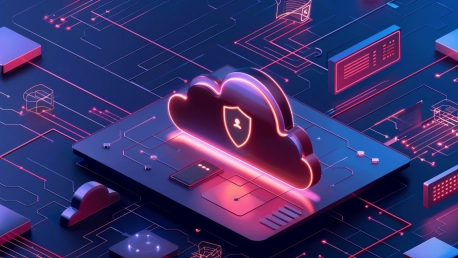In an era where the Internet is the backbone of most businesses, application security has become a critical area of focus. However, Cloudflare’s recent State of Application Security 2024 Report reveals that many organizations are still struggling with outdated security measures. With the rapid emergence of new technologies and threat vectors, it’s vital to explore how organizations can modernize their security approaches to better protect their applications and data. The report highlights significant challenges that reveal an urgent need for adaptive and robust security strategies to combat evolving cyber threats effectively.
The Surge in DDoS Attacks
Distributed Denial of Service (DDoS) attacks are on the rise, presenting a significant challenge for security teams. According to the Cloudflare report, DDoS attacks now account for 37.1% of all application traffic mitigated by the company. Notably, industries such as Gaming and Gambling, IT and Internet, and Cryptocurrency are heavily targeted. As these industries experience relentless assaults, their security teams must adapt strategies to counteract the increasing volume and sophistication of these attacks. Relying on traditional security methods may no longer suffice and requires a shift toward more robust, scalable solutions.Implementing multi-layered defense mechanisms and leveraging advanced DDoS protection services can provide better resilience against these sophisticated attacks. Companies that fail to address this growing threat risk substantial operational slowdowns, loss of revenue, and irrevocable damage to their reputation. As cyber threats continuously evolve, the strategies employed to counteract them must also advance in parallel. Investing in up-to-date technologies and dedicated DDoS mitigation strategies becomes essential to safeguard operations and maintain business continuity.
Rapid Exploitation of Zero-Day Vulnerabilities
A zero-day vulnerability refers to a security flaw that is unknown to the software vendor and for which no patch is available. Exploitation of these vulnerabilities can result in severe security breaches. The Cloudflare report highlights a worrying trend: zero-day vulnerabilities are being exploited faster than ever before. In some instances, it only takes 22 minutes for attackers to start exploiting a newly discovered vulnerability after a proof-of-concept is published. This rapid timeline necessitates that security teams implement automated detection and response systems.Relying solely on manual intervention is no longer viable in such a fast-paced threat environment. Organizations need to adopt a proactive approach by integrating continuous monitoring and intelligence gathering into their security protocols. This proactive stance enables them to anticipate and respond to threats in real-time, thereby minimizing potential damage. Having automated systems in place not only accelerates the detection of vulnerabilities but also ensures timely patching and response, thereby significantly reducing the window of opportunity for attackers.
The Growing Threat of Malicious Bots
Bots account for 31.2% of all internet traffic, with a staggering 93% of that being unverified and potentially malicious. These bots can perform a variety of harmful activities, such as scraping data, executing automated attacks, and spreading misinformation. The report identifies industries like Manufacturing and Consumer Goods, Cryptocurrency, and U.S. Federal Government as primary targets. The implications of unchecked bot activity include operational disruptions, financial losses, and compromised data integrity.Advanced bot management solutions are essential for detecting and mitigating malicious bot activity. Traditional firewalls and security measures are inadequate against sophisticated bot attacks. Implementing AI-driven bot management tools can help organizations differentiate between legitimate bot traffic and malicious activities. Such intelligent solutions can adapt to evolving threats more effectively than traditional methods, providing a more robust defense against malicious bots.Failing to address bot activity can lead to significant operational disruptions, financial losses, and compromised data integrity. Therefore, investing in state-of-the-art bot mitigation strategies is not just prudent but necessary for safeguarding digital assets. As bots become more sophisticated, deploying advanced technologies to manage and mitigate their impact ensures that organizations can protect their operations and maintain data security.
Outdated API Security Practices
APIs are the backbone of modern applications, facilitating smooth communication between different software systems. However, securing these APIs remains a challenge for many organizations. The Cloudflare report points out that most companies rely on outdated security models for their APIs. Traditional Web Application Firewalls (WAF) employ a negative security model that assumes most web traffic is benign. This approach is increasingly ineffective against contemporary threats.Instead, a positive security model, which defines allowed traffic patterns and rejects everything else, is recommended for more robust API security. By transitioning to a positive security model, organizations can better safeguard their APIs against unauthorized access and attacks. This shift requires updating security policies and investing in advanced security technologies designed to manage and monitor API traffic. The transition to a more rigorous security model will enhance the resilience of these critical communication pathways.Organizations must recognize the crucial role that APIs play in their digital ecosystems and take necessary steps to ensure their protection. Diligent monitoring and adopting a positive security model mitigate potential vulnerabilities. As APIs continue to be targets for attackers, strengthening their security framework is essential for maintaining the integrity and availability of critical services.
Risks from Third-Party Dependencies
Third-party code and services are ubiquitous in modern web applications. They enhance functionality and performance but also introduce new security risks. The Cloudflare report indicates that organizations typically use around 47.1 pieces of third-party code and establish approximately 49.6 outbound connections to third-party resources. This reliance on external code makes organizations vulnerable to supply chain attacks, where compromised third-party code can serve as a conduit for further attacks.It is crucial to conduct thorough vetting and continuous monitoring of third-party services to mitigate these risks. Implementing a strong governance framework and ensuring stringent security standards for third-party integrations can help in reducing exposure to supply chain threats. Regularly updating and reviewing third-party code dependencies are also best practices that organizations should adopt. This vigilant approach helps to minimize vulnerabilities and enhances overall application security.Organizations must remain aware of the potential liabilities introduced by third-party dependencies and take proactive steps to mitigate risks. By conducting regular security assessments and maintaining an updated inventory of third-party services, they can better control and protect their application ecosystems. Robust third-party management practices are essential for safeguarding against the escalating threats that come with the increased use of external code.
Dynamic Nature of Cyber Threats
In today’s digital age, where the Internet serves as the foundation for most businesses, ensuring the security of applications has become absolutely critical. However, the recent 2024 State of Application Security Report from Cloudflare shows that many organizations are still faltering with outdated security practices. As new technologies and threat vectors emerge at a rapid pace, it’s crucial for businesses to explore modern approaches to safeguard their applications and sensitive data. The report underscores significant obstacles that organizations face, indicating an urgent need for dynamic and robust security strategies to effectively counteract evolving cyber threats. Moreover, with cybercriminals becoming more sophisticated, traditional security measures simply aren’t sufficient. Adopting adaptive security measures not only helps in mitigating immediate risks but also prepares organizations for future challenges. Therefore, the insights from the report emphasize that the landscape of cyber threats is continuously shifting, and businesses must prioritize innovative and forward-thinking security solutions to stay protected.









